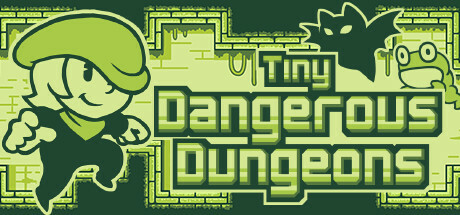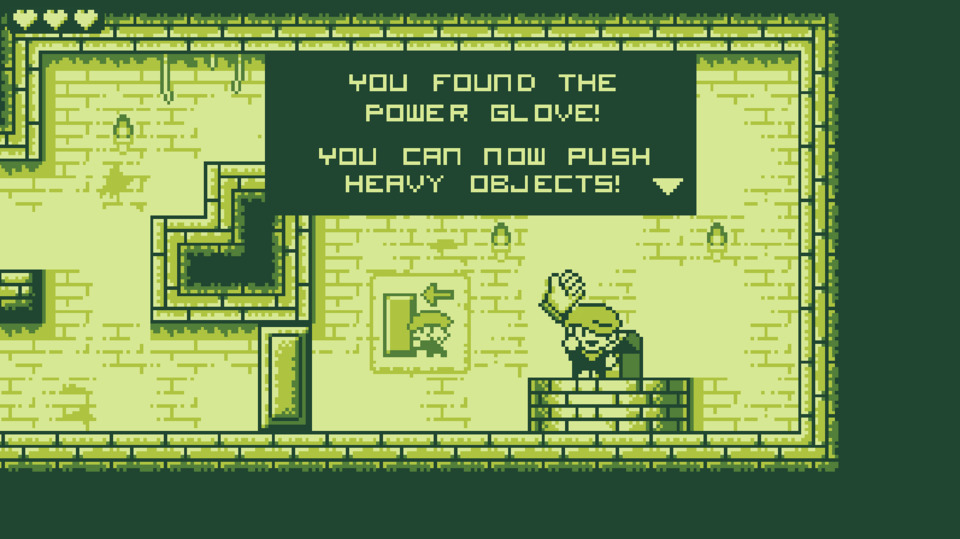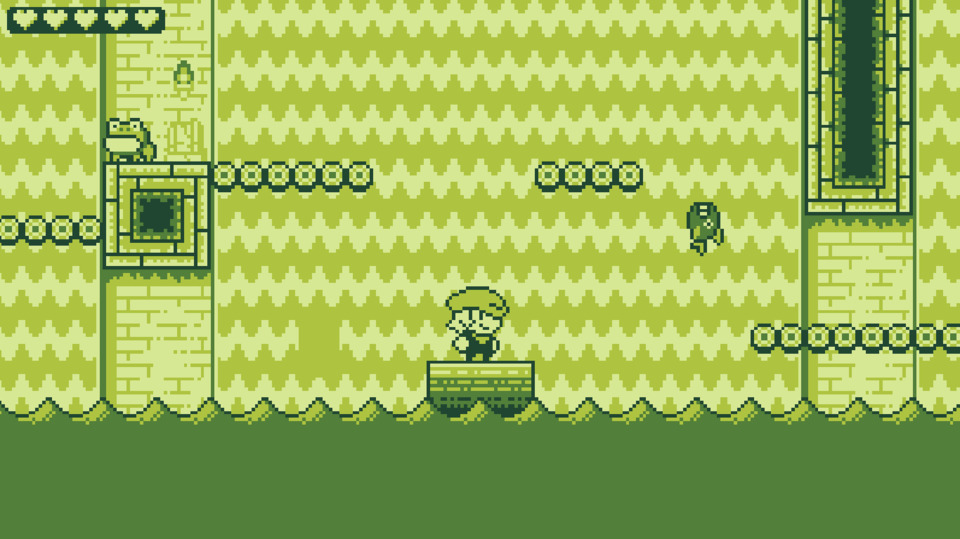
I realize I'm playing a lot of explormers lately, even for me, but I think whomever suggested that present Indie developers are smitten with the format might've had a point. There's just more and more coming out every year than ever before; maybe the Unity developers recently came up with some effective map tech and everyone saw that as an opportunity to get their Metroid on. Whatever reasons others might have for developing an explormer in recent years, at least with Tiny Dangerous Dungeons you know the score almost immediately from the way it looks: it was clearly designed for a Game Boygame jam by the way it conforms itself to that trademark tri-flavored pea soup green palette and tiny resolution.
A bite-sized explormer with a whole lot of lo-fi charm, Tiny Dangerous Dungeons tosses you into a dungeon (a tiny, dangerous one, natch) with no map or direction but it doesn't take long to get your bearings. True to its name, the dungeon is barely a few dozen rooms and your protagonist already starts with all the jumping prowess they're going to need; the upgrades instead tend to range from the map (there is one, you just don't have it to start with; which makes some sense in retrospect) to throwing knives as a means of defending yourself, to a few well-hidden health upgrades. To highlight the sort of truncation we're dealing with there's one upgrade that lets you walk on water that you need for exactly one barrier: after that, the rest of the level design uses lava pools as the pitfalls instead.

The map is extremely useful for navigation: it not only delineates all the rooms, including the secret ones, but will indicate where there are items still yet to be found. Perhaps a map that reveals too much you could say, but I'm starting to feel like the more accommodating the map the better; and it still won't tell you if those items are accessible right now, or if there's still some upgrade you need to reach them. With the secret areas, you know where they are in relation to the other rooms but not how to get there: whether you need to head up, down, or from the side.
Aesthetically, while the game has those Game Boy limitations it makes some smart use of them. One secret door reminded me a similar secret in Wario Land: Super Mario Land 3, one of the finest platformers for the original GB system. It involves making a door-shape out of the animated two-tone waterfall flowing in that part of the map. It's easy to miss if you aren't looking for it (as stated above, you only have approximations for secret rooms) but the sort of thing that only really works with a limited color palette. It also understands that the limitations of the resolution means you have to either build a game around sprites that take up a lot of room, or make smaller sprites that aren't nearly as expressive; Tiny Dangerous Dungeons opts for the former, making some of the (intended) difficulty of the game working your way around enemies during the first half where you have no means to defeat them. The platforming is precise enough, and the sprites have very clear hitbox boundaries, that it thankfully only presents a moderate challenge.

The game makes great use of its limitations, but the fact remains that it is constrained not only by its format but whatever strict time limit it was developed under as part of its game jam. Technically it works as intended - this isn't to imply rushing through development caused too many bugs, and the developer would've ironed those out after the fact if they planned to release it commercially regardless - but what I mean is that there's not a whole lot of meat to Tiny Dangerous Dungeons. There's no currency, no collectibles, no RPG mechanics, a handful of expected upgrades and key items, and really not much in the way of any notable features or mechanics beyond jumping over enemies and going through doors. It's definitely an appealing morsel of a game, but it works best as a stylistic exercise - a tech demo of a Game Boy explormer nonpareil that never was - than something capable of standing shoulder-to-shoulder with even the more modest Indie explormers of late. If it belongs with any crowd, it's with other small fry explormers like Xeodrifter, Gato Roboto, and the many fine Flash freeware explormers that used to congregate on, uh, Kongregate. Still, it does say "Tiny" right there on the label so it's not like it's keeping the scope of its ambition a secret...
Rating: 3 out of 5.
| < Back to 226: Unavowed | The First 100 | The Second 100 | > Forward to 228: Picross S3 |
Log in to comment